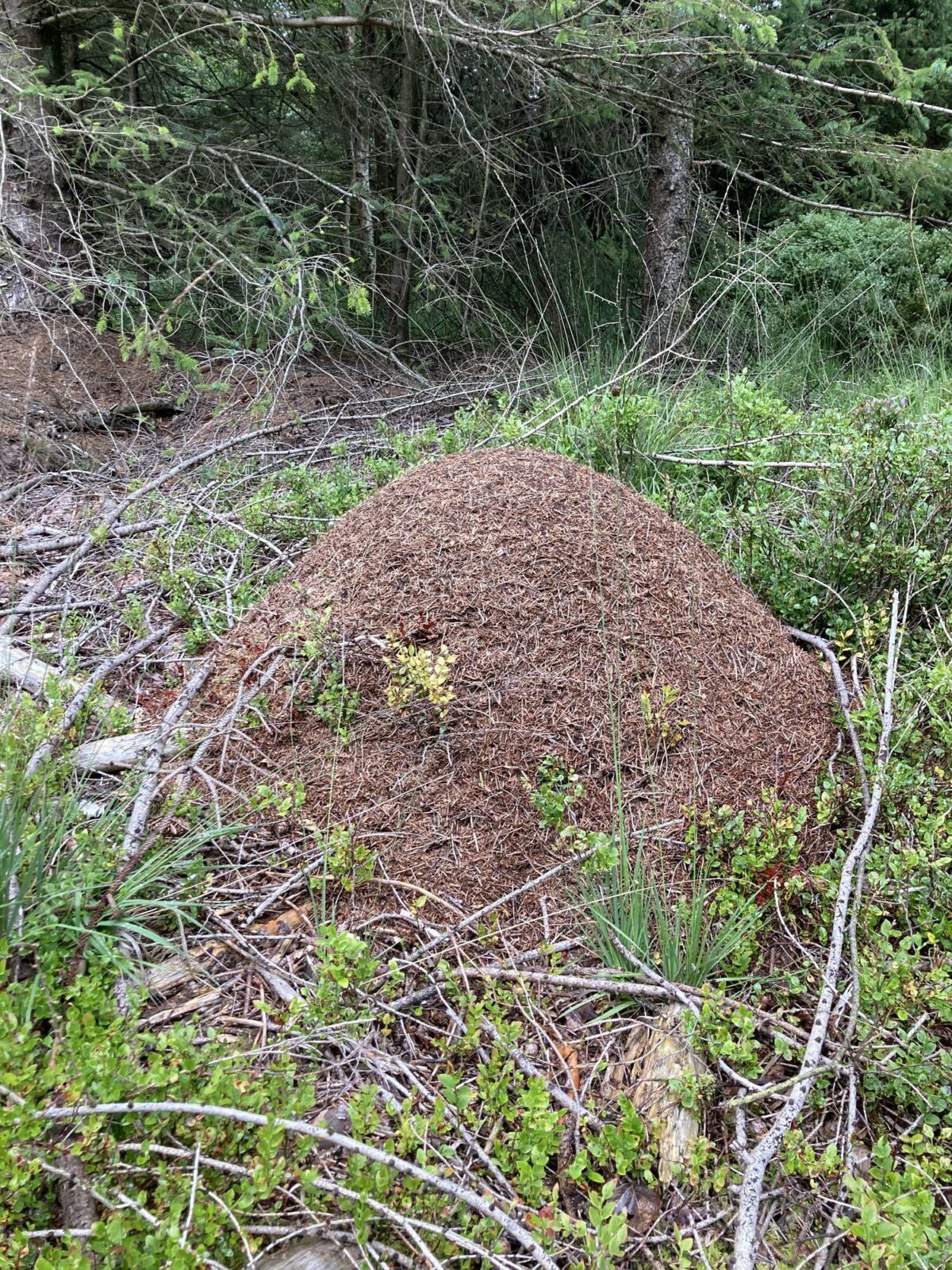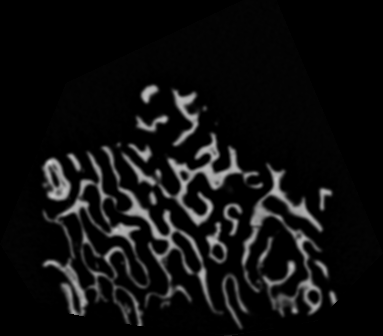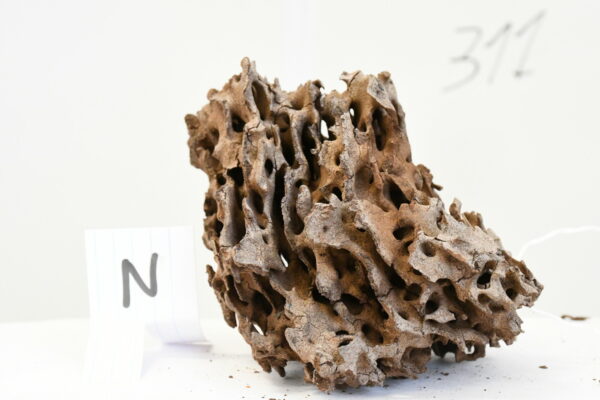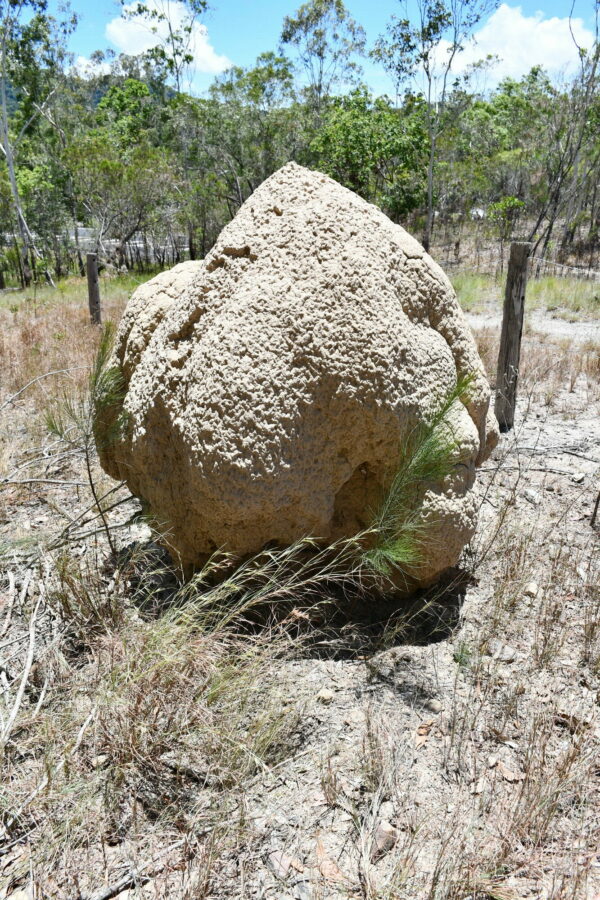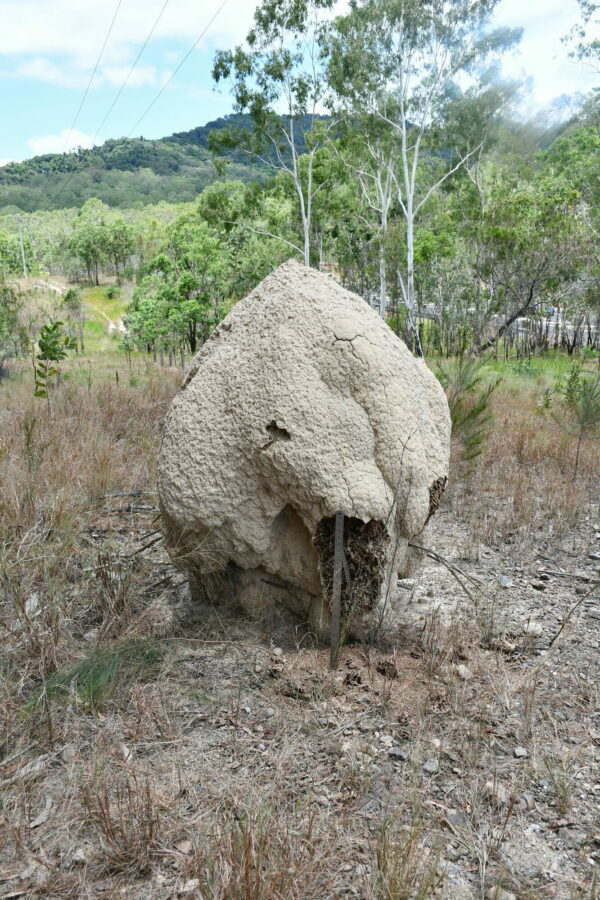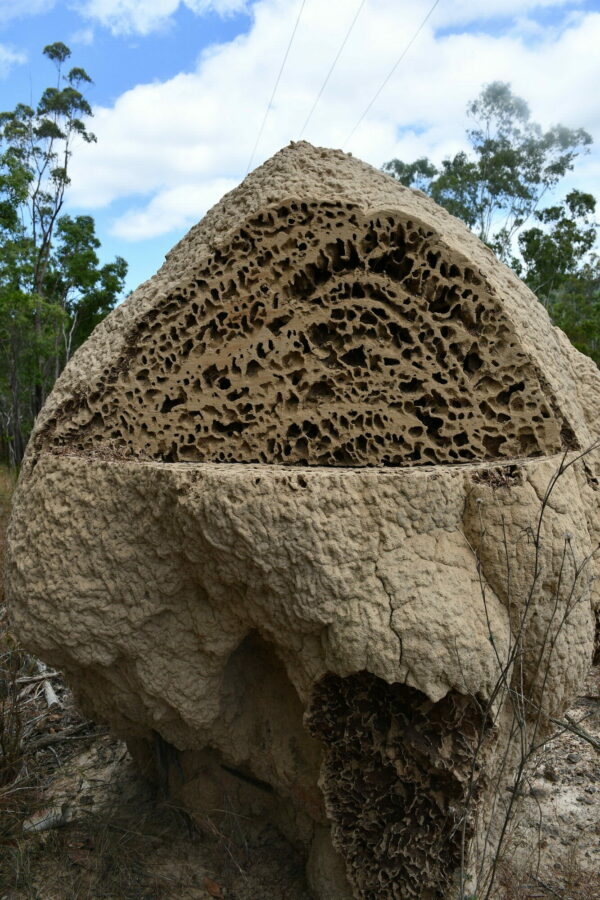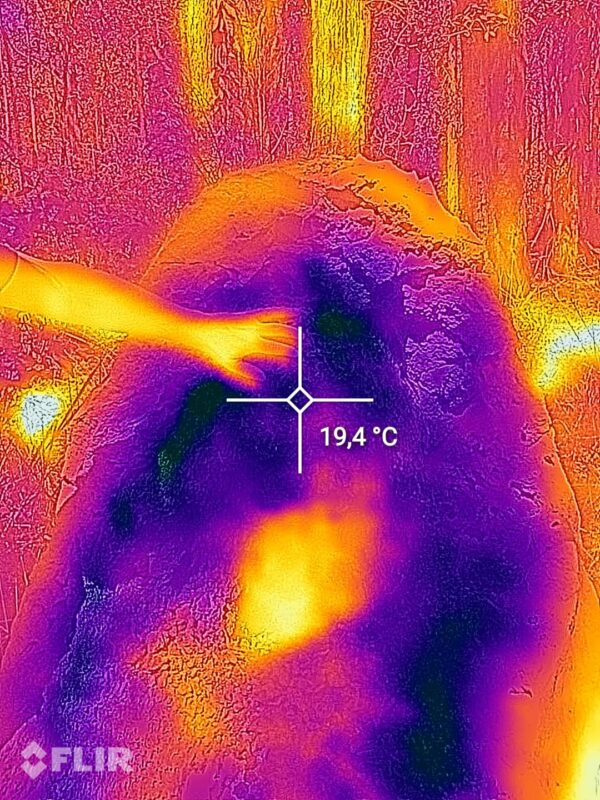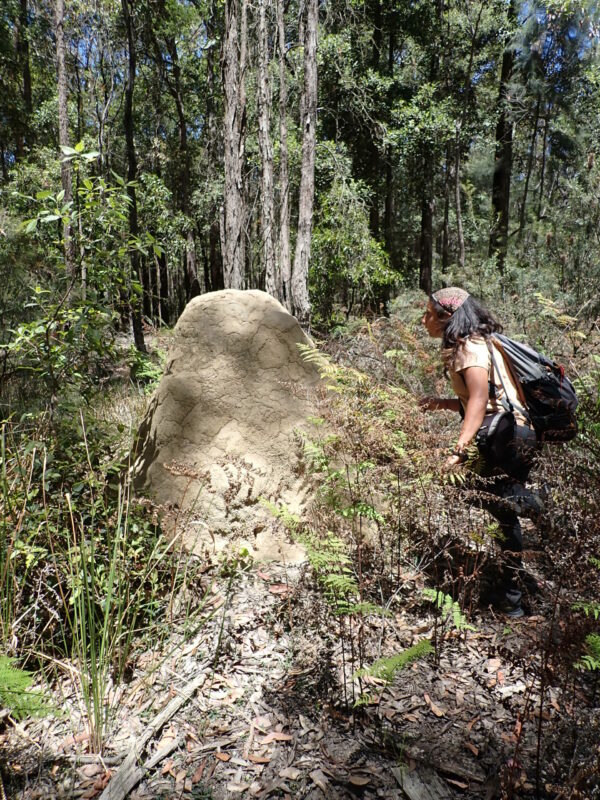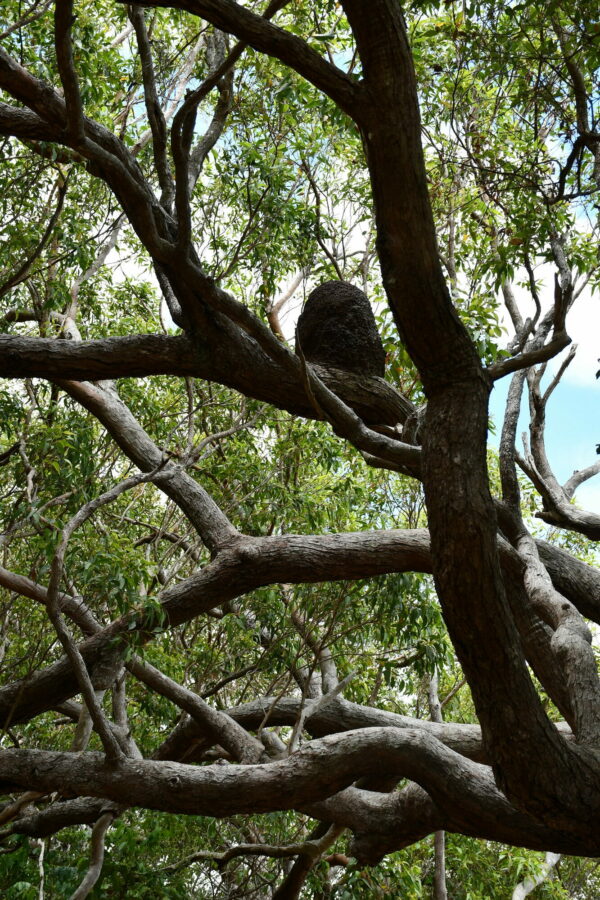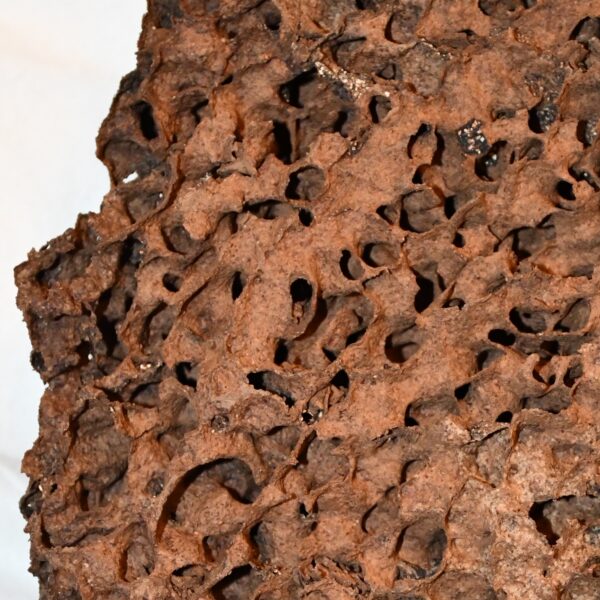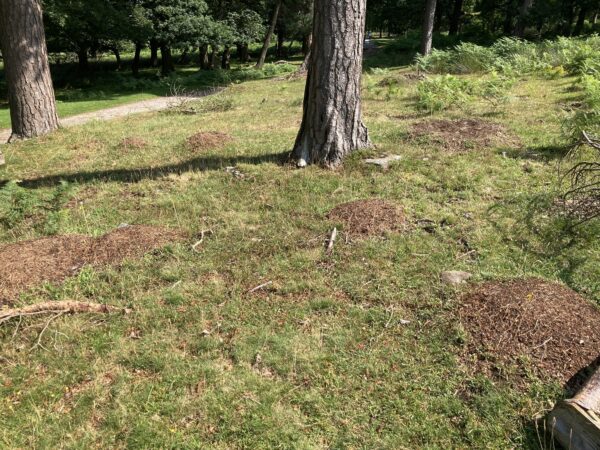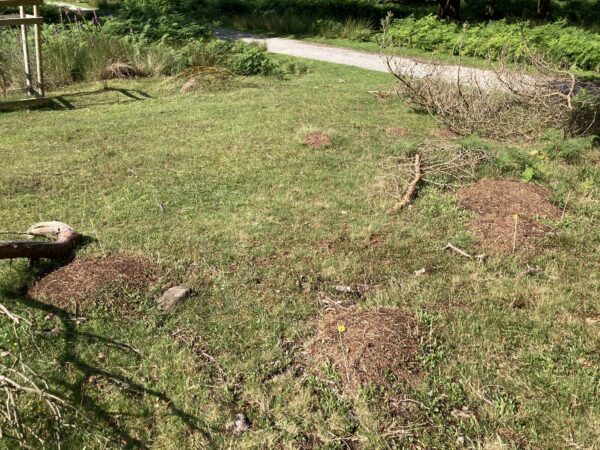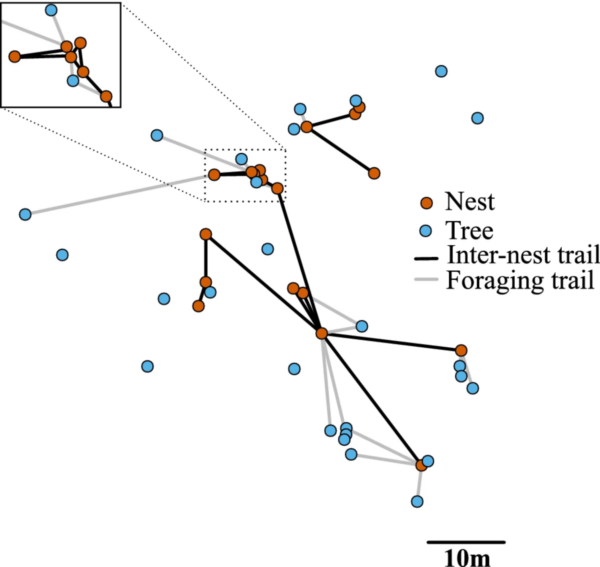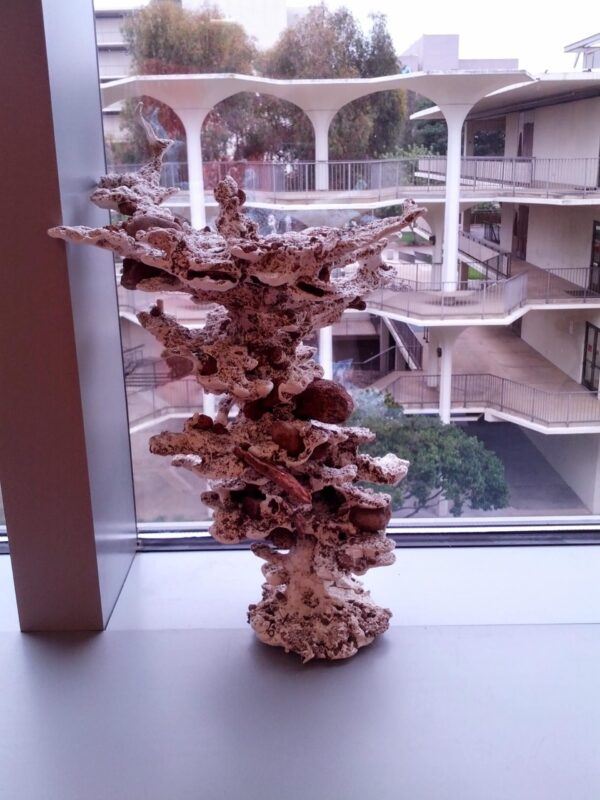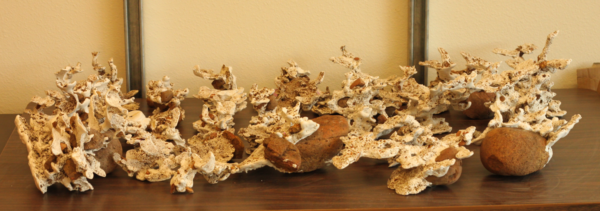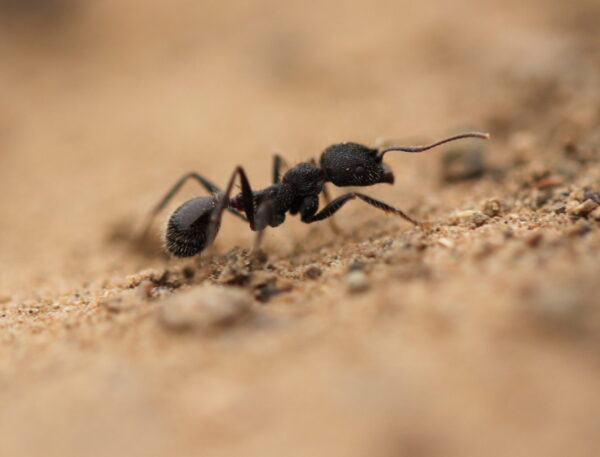In some ant species, the colony is spread across multiple spatially separated, but socially connected nests: ants can move from one nest to the other without being attacked, and they can also exchange resources such as food from oversupplied to undersupplied nests. We refer to these multi-nest colonies as polydomous (a word whose greek roots literally mean that the colony has ‘multiple houses’).
The wood ant Formica lugubris is one such ant species that can form polydomous colonies. Interestingly, other populations of ants of the same species can also form monodomous colonies – colonies in which ants occupy a single nest.
Formica lugubris nests can look quite different when they are in different environments. If a different page shows nests built in a woodland pasture https://www.morphospace.org/our-nests/formica_lugubris_Longshaw_m20/, here we see the picture of a nest built in Cropton forest, a managed conifer plantation.
This nest is part of a polydomous ant-colony.

